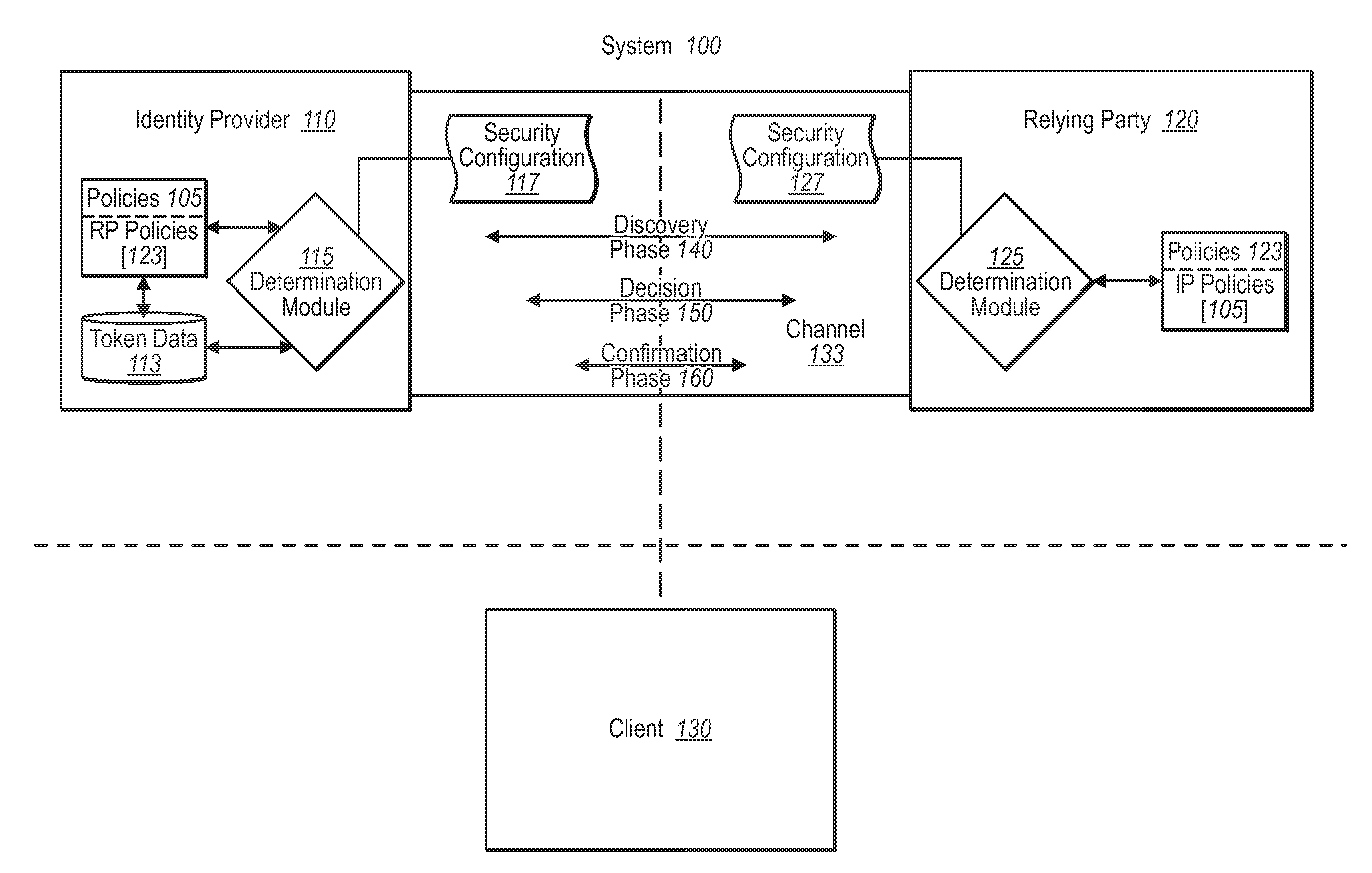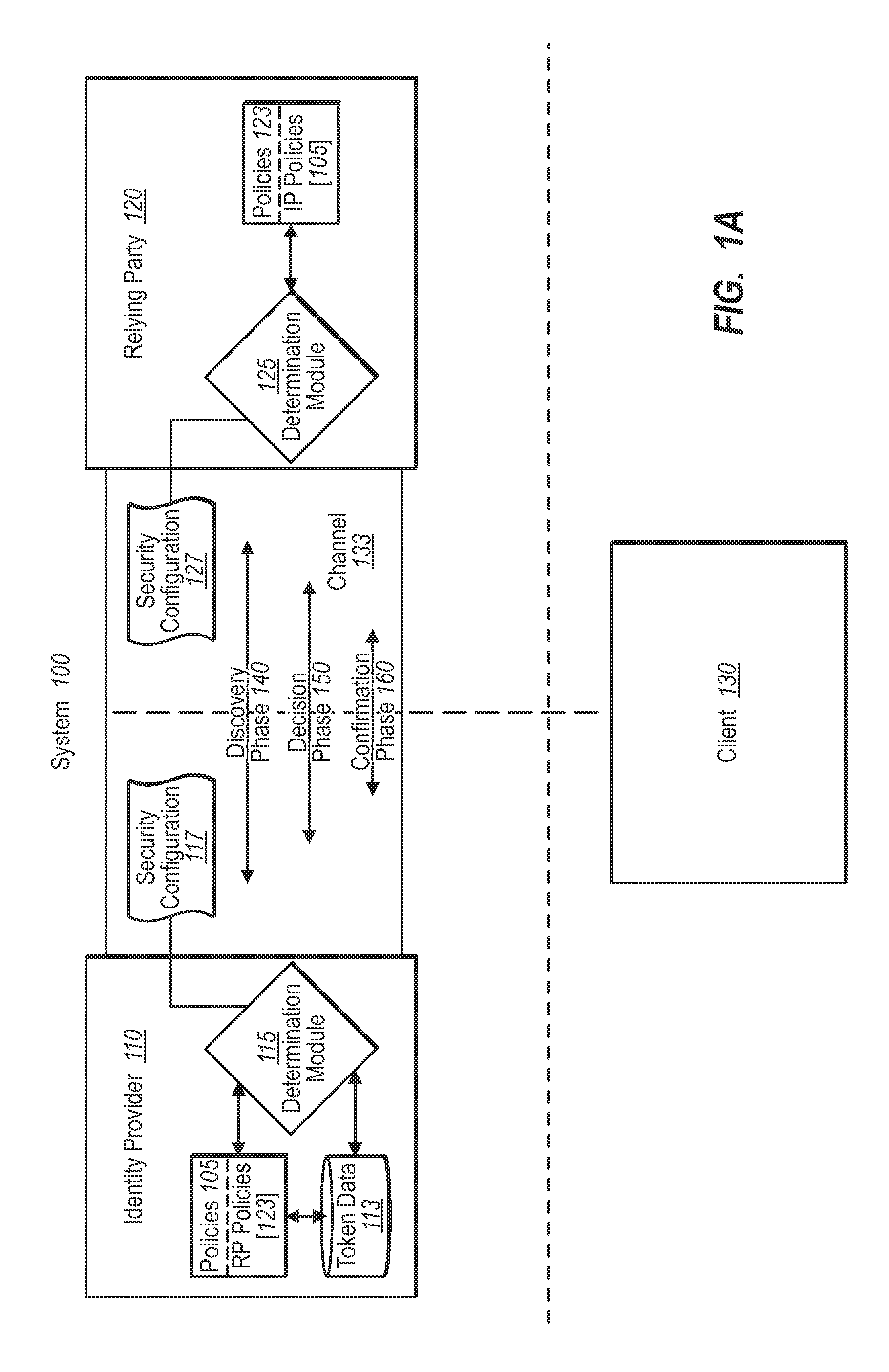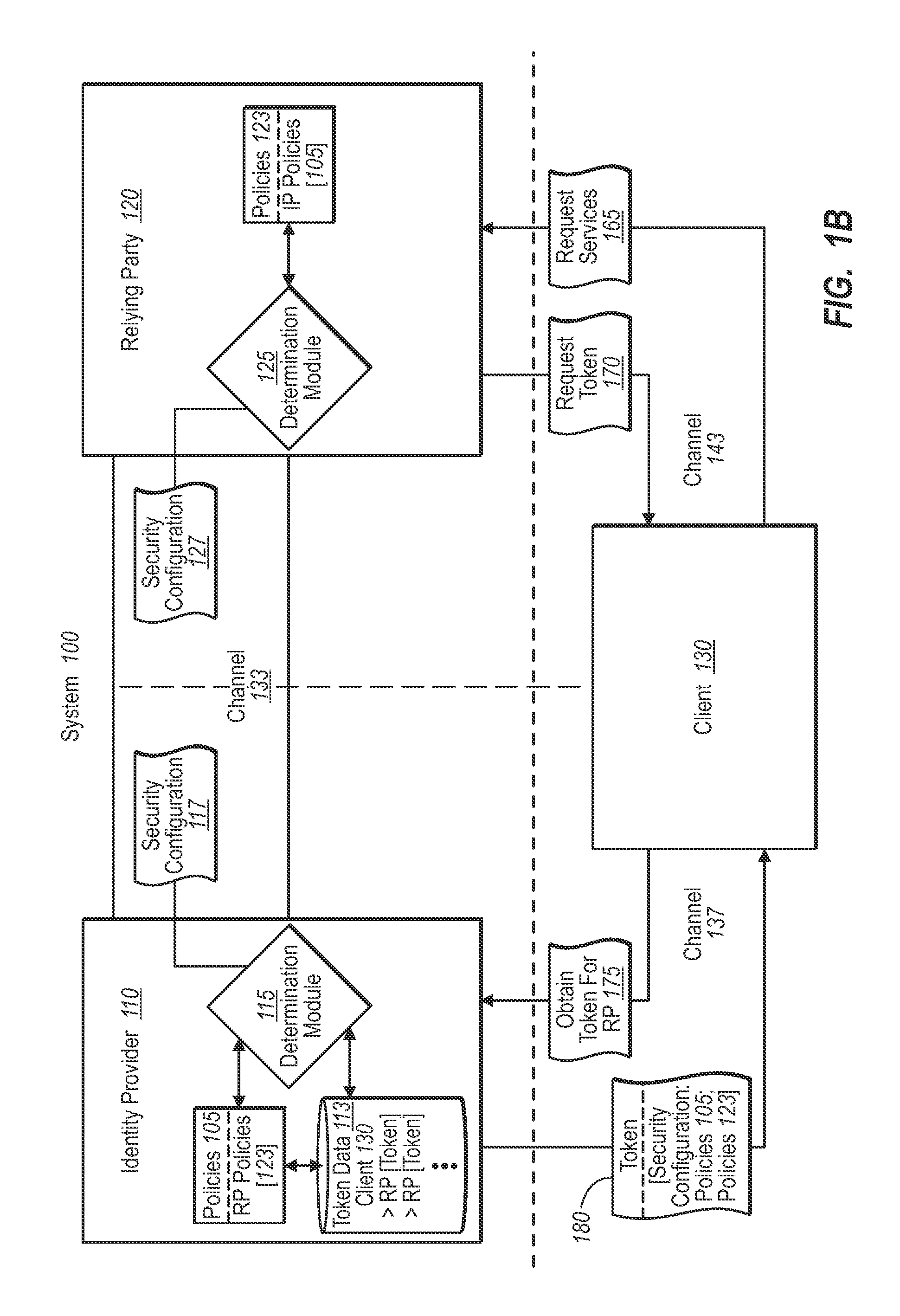Automating trust establishment and trust management for identity federation
a trust management and identity federation technology, applied in the field of identity federation automatic can solve the problems of inability to complete transactions in time, and inability to automate trust establishment and trust management, etc., to achieve the effect of increasing the efficiency and complexity of transactions such as the abov
- Summary
- Abstract
- Description
- Claims
- Application Information
AI Technical Summary
Benefits of technology
Problems solved by technology
Method used
Image
Examples
Embodiment Construction
[0026]Implementations of the present invention extend to systems, methods, and computer program products configured to automate trust establishment processes between identity providers and relying parties in a federated identity system. In one implementation, for example, a party to a trust relationship, such as an identity provider, publishes configuration information for establishing, monitoring, and maintaining a trust relationship with another party, such as a relying party. The other party, e.g., the relying party, can also publish its own configuration information. The parties to the trust relationship can then continually and automatically obtain each other's published information through an agreed-to channel that is independent of a channel used by the client. Both parties can thus flexibly and continually maintain, end, or renew a trust relationship with each other, and / or virtually any number of other parties at any time.
[0027]As will be understood more fully herein, imple...
PUM
 Login to View More
Login to View More Abstract
Description
Claims
Application Information
 Login to View More
Login to View More - R&D
- Intellectual Property
- Life Sciences
- Materials
- Tech Scout
- Unparalleled Data Quality
- Higher Quality Content
- 60% Fewer Hallucinations
Browse by: Latest US Patents, China's latest patents, Technical Efficacy Thesaurus, Application Domain, Technology Topic, Popular Technical Reports.
© 2025 PatSnap. All rights reserved.Legal|Privacy policy|Modern Slavery Act Transparency Statement|Sitemap|About US| Contact US: help@patsnap.com



